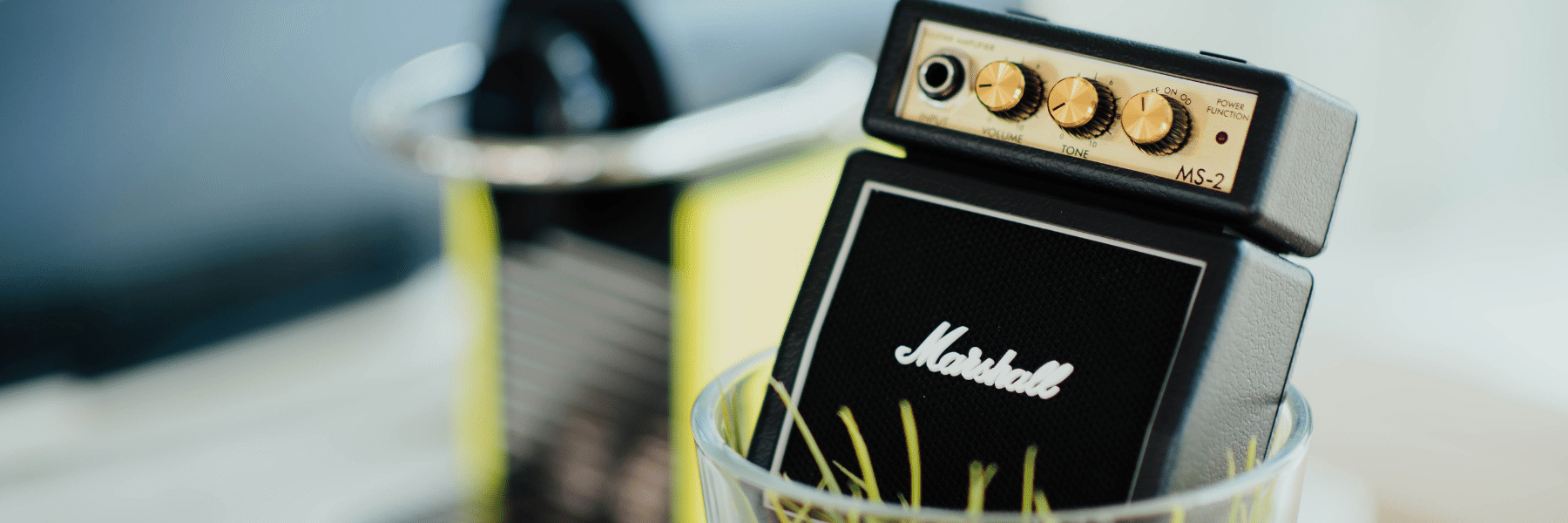Optimizing the performance of your Google Ads can seem like a guessing game. But what if there was a proven way to improve conversions (while decreasing costs) from ads that already generate the majority of your sales?
In this article, you’ll learn all about single keyword ad groups (or SKAGs for short). You’ll discover how to uncover your top-performing keywords, and optimize them for a higher click-through rate, conversions and lower CPC.
What are Single Keyword Ad Groups (SKAGs)?
Simply put, Single Keyword Ad Groups (SKAGs) are ad groups dedicated to a single keyword. Traditionally, many ad groups contain several keywords related to the product, service or offer you’re attracting traffic to.
The challenge with this approach has always been in the creative. It’s difficult to write relevant copy for a dozen or more keywords. Not only does this hurt click-throughs, but also your Quality Score.
To overcome this challenge, performance marketers use an approach where top-performing keywords would have their own dedicated ad groups. This allows for tighter messaging, an increase in click-throughs and better results overall.
It also leads to a higher Quality Score, as the copy, keyword and landing page are relevant to one another. For example, here’s what a search for “branded coffee cups” yields:

As you can see, the second result is the only ad that contains the exact keyword in the ad copy. In this way, SKAGs allow you to create highly relevant and engaging ads, providing searchers with the exact result they’re looking for.
Do SKAGs Still Work?
There’s a lot of chatter in the SEM world that SKAGs are no longer best practice. In September 2018, Google expanded its exact match close variants to match the intent of what the user searches for, not the search query itself.
Google is investing more and more in machine learning to understand what a searcher truly wants. In turn, this slowly removes the need to create SKAGs, as their original purpose was to helps SEMs create a more tailored customer journey for the user. For some paid media specialist, the change in the environment means SKAGs are harder to manage.
The question remains: do SKAGs still work? The answer is: it depends. For more seasoned SEMs, this approach may seem outdated and unnecessary. For smaller advertisers, however, there are still many benefits to using SKAGs – especially if you have a small or complex product inventory.
Primarily, your SEM efforts should serve the intent of the user. If Google’s technology does that better than creating SKAGs, then you should always follow their lead.
7 Compelling Reasons to Use SKAGs
You might be wondering, why should you bother with SKAGs in the first place? Sure, it can lead to a higher Quality Score, but there are several other ways to do that. Why increase the number of ad groups you need to manage?
The benefits are far-reaching. Here, I’ll explain what some of the biggest wins you can achieve by creating SKAGs.
1. Better Click-Through Rates
When you tailor your ad copy to an individual keyword, you’re creating a tailored experience for the searcher. By demonstrating you’ve got what you’re looking for, you’re more likely to grab their attention.
Of course, creating this level of laser-focused messaging takes some experimenting with. Great copy comes from understanding the intent, pain-points and needs behind the person conducting the search.
This is where generating qualitative insights can lead to stronger messaging. Speak to your customers, ask them why they purchased from you and what they love about your products. Use their language in your ad copy (as well as your landing pages) to attract more clicks.
2. A Stronger Quality Score
There are many factors that go into determining a Quality Score, and while nobody outside of Google is 100% sure what all of them are, we do know that the following affects it:
- Click-through rate
- Ad copy relevance
- Ad group and keyword relevance
- Landing page relevance and quality
- The historical performance of your Google Ads account
While we don’t fully understand how much of an impact each element makes, many industry experts believe click-through rate is the most important. Looping back to the previous benefit, a more relevant ad copy leads to more clicks, which makes a big impact on your overall Quality Score.
But that doesn’t mean you should ignore the rest. Luckily, by using SKAGs, you’ll inevitably tick these boxes. For example, if you’re driving traffic to a specific landing page, it’s highly likely that the copy and purpose of the page will be relevant to the keyword a user has searched for.
3. More Impression Shares
As your Quality Score improves, the higher you’ll rank in the SERPs. This, in turn, increases your overall impression share.
Why is this important? Because it gives you an indication of what keywords are performing well and why. Google Ads breaks down impression share as follows:
- Search impression share
- Search lost impression share (budget): Shows the percentage of impressions you lost due to lack of budget
- Search lost impression share (rank): Show the percentage of impressions lost due to low ad rank
- Search exact match impression share: The impressions from queries that exactly match your target keywords
Using SKAGs, you can increase the quality of your ads and thus, the contributing factors to your impression share.
Bonus tip: Another way of improving your impression share is by adjusting geo-targeting settings. By serving a smaller geo, you can work to get your ad seen as much as possible within that area.
4. Better Average Positions
As you focus on optimizing your Quality Score and CTR, you’ll slowly start to see your average position increase. Not only will you rank above your competitors, but you’ll pay less than them – even if you’re positioned above them.
It’s becoming clearer that engagement and CTR is a huge factor for Google, both for paid and organic. SEOs are optimizing the title tags and introductions to attract users and keep them on the page.
The same goes for PPC. A higher CTR indicates that you’re giving people what they want, and Google will want to reward that.
5. A Cheaper Cost-Per-Click
An increase in CTR doesn’t always mean an increase in ad spend, especially if you’re focusing on your Quality Score.
Indeed, your SKAGs are the first stepping stone of a relevant and fulfilling customer journey. Much like the increase in positions on the SERPs, Google will reward you with a lower CPC.
6. A Better Landing Page Experience
The benefits of SKAGs aren’t just for you as a marketer. It’s the first step in a truly delightful experience for the customer, as you’re able to give them exactly what they’re looking for.
So, what comes after the click? The landing page, of course! Where the ad is designed to demonstrate you have what the searcher is looking for, a personalized landing page is there to give it to them.
And as you’ve created an ad journey for a specific purpose, it’s highly likely that they’re going to find it there. Everything from the headline, benefit-driven copy and even your testimonials can be tailored to the user’s intent.
In short, the entire experience is dedicated to guiding a user to a desired action – whether that’s to download an ebook, fill in a form or make a purchase.
7. More Conversions
SKAGs are best used on your highest performing keywords. This is not only from a traffic or CTR perspective, but those that generate conversions.
You’re essentially pouring gasoline on your highest performing keywords. If they’re already performing well among dozens of other keywords, imagine the increase in conversions you’ll generate once you start optimizing CTRs and climbing in the SERPs.
It also allows you to allocate resources into top-performing landing pages. Run A/B tests to increase conversion rates, making the most out of your fresh batch of traffic.
A Simple Process for Creating SKAGs
With the “why” behind SKAGs taken care of, let’s look at how to create them. First, I should reiterate that you shouldn’t create SKAGs for every single keyword. This will create a logistical nightmare, not to mention all that ad copy you’ll need to write.
Focus only on the keywords that bring in the best results. Which keywords generate the majority of your conversions? Uncover the handful that makes the biggest impact and focus on those.
For the sake of this article, we’ll use Google Analytics as our report of choice.
Head to Google Analytics > Acquisition > Google Ads > Keywords to find your keyword report. Then, sort the report by Goal Completions:

Start with the first 10 to 20 keywords to seed your SKAGs. Head to Google Ads and, under the relevant campaign, create a new ad group for your first keyword.
When you add your target keyword, you’ll want to include three variations: phrase match, exact match and modified broad match. For example, here’s what this would look like if we were creating an ad for “black desk lamps:”

Why do we do this? Well, if someone searches for a long-tail version of your keyword, you’ll still provide a relevant result. It also provides more data for testing in the long-term.
Next, it’s time to create the ad copy. Make sure the copy of your ads mirrors what you deliver in the landing page. Most importantly, include the target keyword in both the headline (preferably at the beginning) and the URL.

Repeat this process for all your chosen keywords. In the beginning, it’s best to set the same bid amount for all SKAGs. As you start to collect data, and see which ad groups, ads and keywords perform best, you can re-allocate budget as needed.
Conclusion
If you’re looking to double-down on the results of your Google Ads activity, then creating a handful of SKAGs is a fast way to do so.
Remember, focus on the keywords that are already bringing you results. The beauty is, as there’s an increase in relevance between your keyword, ad copy and landing page, you’ll see your Quality Score increase.
And we all know the beauty of a high Quality Score: a better position in the SERPs than your competitors while paying less.
Images:
Featured image: via Unsplash / Alexandra
All screenshots taken by the author November 2019
Image 1: via Google
Image 2: via Google Analytics
Iamge 3 and 4: via Google Ads



